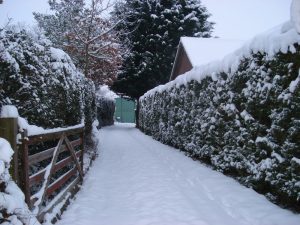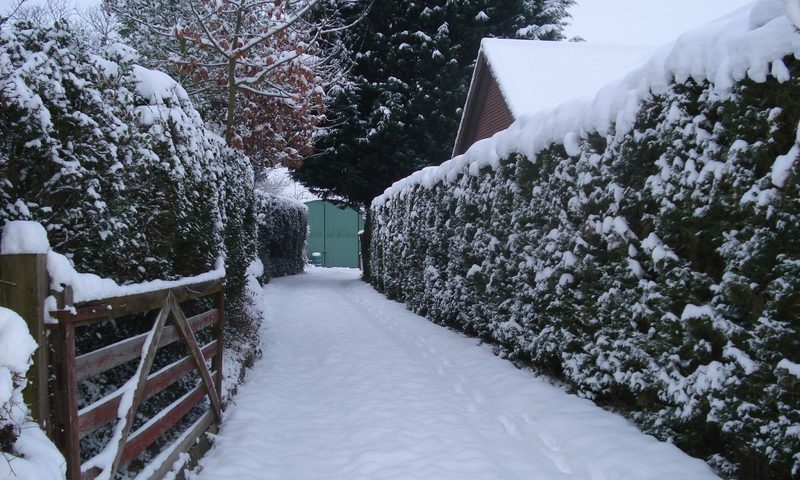
Salt: it’s our oldest food seasoning, an essential nutrient for good heath, a relaxing and therapeutic addition to a hot bath, and, in some religions and cultures, part of rituals and deeply held beliefs.
It’s also what we dispense on roads in winter to keep them safe for travel even when there’s winter weather. Why? There’s science behind the importance of ice prevention and winter-weather salt procedures. Salt lowers the freezing temperature of water and melts ice because heat is generated when salt is in contact with water. This chemical reaction is what results in decreasing temperature and, therefore, melting (rather than solid) ice.
Because of this, it’s a common practice ice prevention by salting roads before a storm or to use salt to melt ice that’s accumulated on sidewalks and roadways. Doing so has been proven effective; according to the American Highway Users Alliance, salting roads decreases collisions by up to 85%.
Use Salt for Snow and Ice Prevention
But it’s not just roads that get icy or snow packed. Sidewalks, driveways, and parking lots need attention, too. Some of this is easy to do on your own. By keeping a container of commercially available salt and salting before the snow or ice hits, you can prevent dangerous conditions.
What kind of salt is best to use?
What differentiates table salt from ice melt isn’t the chemical composition of each. The salt you buy to spread on your sidewalk is the same, structurally, as the stuff you shake into your bowl of soup. What’s different is the size. Table salt is small and fine while commercially available rock salt/ice melt is larger and coarse. This means you could, technically, use table salt to keep ice off of your sidewalks. The question is, would you want to?
It’s Natural, So It’s Safe. Right?
The answer to that question isn’t a simple yes or no. Yes, salt is a natural mineral. But just like having too much in your diet can lead to unwanted and dangerous health conditions, using salt incorrectly or in excess to remedy winter weather conditions can also have unwanted consequences.
It’s important to take care when sprinkling salt. It can adversely affect metal, for example—and if you’re salting your driveway or parking space, this means that it can affect your car or other vehicles. Simply put, the more your vehicle is in contact with salt, the more rust you can expect. You can also track salt into your home via boots, which means it might embed in your carpet.
Think Globally, Act Locally
There are other considerations, to be sure. And many of those factors affect you and your neighbors, both on local and global scales. The truth is, damage to infrastructure sometimes occurs when using salt. In fact, it’s estimated that damage due to corrosion costs between $3.5 to $7 billion dollars every year.
These concerns don’t mean we shouldn’t overlook the benefits of using salt for snow and ice prevention. But it does mean consulting with professionals to understand which salt is best to use, to determine best practices in application and frequency, and to ensure that it’s being used in the most economically and environmentally favorable way.
We can help with all those questions and we’d love to discuss this with you before the first flake falls this winter! Reach out to start that conversation.


